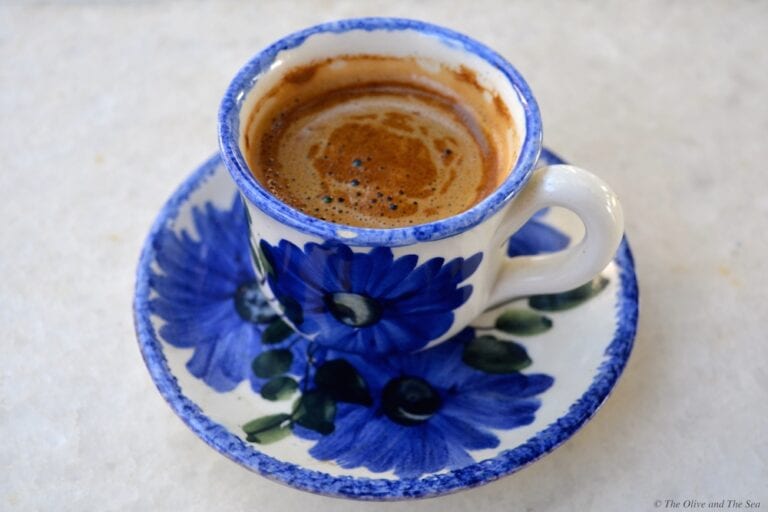As much as Italian coffees such as cappuccino and espresso have gained popularity in the United States, Greek coffees are still relatively unknown. Outside of specialty cafes or restaurants, you will be hard pressed to find a coffee shop that serves Greek coffee or what might be better labeled as Mediterranean coffee given that it is enjoyed throughout the region, not just Greece. Although this type of coffee does require a certain familiarity with roasted brews, it is surprising that it isn’t more prevalent at coffee houses. In addition to its unique flavor, the coffee’s preparation is fun to watch, and the unfiltered coffee grind forces the drinker to sip it slowly in order to not disrupt the gentle settling of the sediment at the bottom of the cup. Enjoying a Greek coffee is when I am reminded to just sit back, relax, and take it all in.
Ingredients
- 1 cup of water
- 3/4 teaspoon sugar
- 3 heaping teaspoons Greek coffee
Important Note
Preparing Greek coffee requires the use of a specific type of pot called a briki, pronounced “bree-kee” (see pictures below). It also requires a specific coffee grind, which is much finer than standard drip coffee. These are often carried by specialty import stores and are widely distributed by on-line retailers.
Preparation
- Pour the water into the briki
- Heat over medium heat
- While the water is heating
- Add the coffee and sugar and stir
- Once the sugar and coffee have dissolved into the water, stop stirring
- As soon as the coffee begins to boil, remove from the heat
- Your coffee is ready to be served. When serving, slowly pour a little in each cup first and then top each one off. This allows for the foam that develops at the top of the coffee during the boiling process to be evenly distributed between the cups
- Let the coffee sit for 5 minutes after serving, in order for the coffee grinds to settle at the bottom of the cup. This sediment should be left at the bottom of the cup when finished with your coffee






